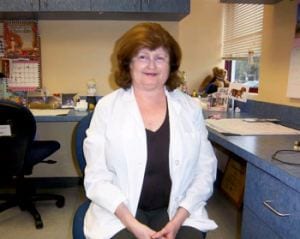
“Here” is not only the magazine itself, but also the science, art, and business of plastic surgery. I had my first major exposure to plastic surgery at The Aesthetic Meeting 2005—the annual meeting of the American Society of Aesthetic Plastic Surgery (ASAPS) and the Aesthetic Surgery Education and Research Foundation (ASERF)—in late April and early May in New Orleans. I had the great pleasure of meeting many of you during the scientific programs and in the scientific and technical exhibit halls. Quite a few of you—practitioners and exhibitors alike—went out of your way to welcome me to the industry and to offer your assistance while I was getting up to speed.
What did I learn at the meeting? I learned that plastic surgery and other aesthetic treatments are sciences and art forms unto themselves. They are certainly in a category apart from other branches of medicine in that form is frequently (but not always) more important than function—and therefore, there is not necessarily only one “right” way to accomplish a goal. In some cases, highly competent practitioners even disagree as to what the goal should be. During the question-and-answer sessions following some talks, I witnessed a few interesting exchanges among surgeons that made it very clear that some think more like artists (“I work on it until it looks right.”) and others more like engineers (“What?! You don’t take measurements?”). I will leave it to you to decide which group you belong to.
The face is an excellent example of a treatment area for which quite different techniques are used to achieve similar results. In this issue, we present opposing—or at least divergent—views as to how to reverse the effects of aging on the midface. To make things more interesting, we’ve added a sidebar that challenges conventional assumptions about the nature of facial aging. I suspect that when it comes to faces, and how to improve their appearance, we could easily publish articles by a dozen practitioners who think about this subject differently and use diverse techniques to achieve the desired results.
Elsewhere in this issue, we present pieces on topics ranging from fat grafting to the treatment of scars in highly pigmented skin to how to avoid malpractice lawsuits—plus, of course, our usual broad coverage of industry news and the products and services in the marketplace. As in the past, this magazine endeavors to cover a wide range of subject matter in each issue, and this policy will continue. In fact, if there’s a facet of plastic surgery that you would like us to cover, please let me know.
Maybe you’d even like to write about it yourself. In any case, please let me hear from you. This is your magazine, and its charter is to provide information and ideas that are important to you and your practice.


